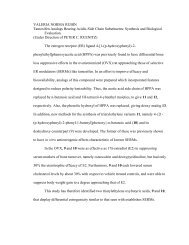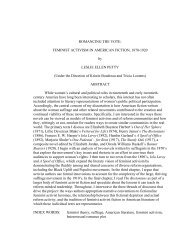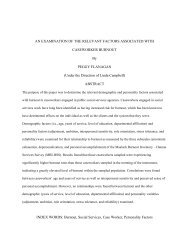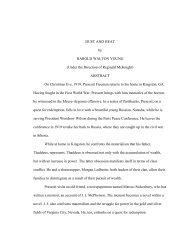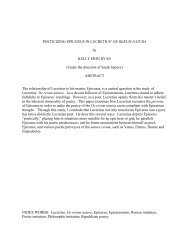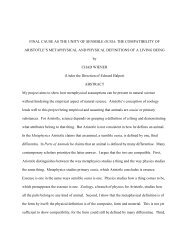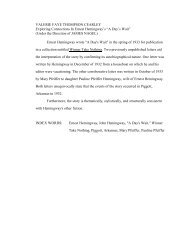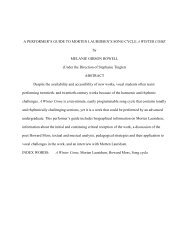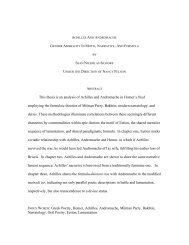exploring a popular culture body modification - Athenaeum Home ...
exploring a popular culture body modification - Athenaeum Home ...
exploring a popular culture body modification - Athenaeum Home ...
Create successful ePaper yourself
Turn your PDF publications into a flip-book with our unique Google optimized e-Paper software.
general concept (Bryant & Charmaz, 2006, p. 188). Using this reference as a foundation, the<br />
data was analyzed first using coding, and secondly using memo-writing. Coding is giving<br />
different pieces of the data short names, in order to help the researcher see ideas embedded<br />
within the data and make comparisons between sets of data. The first type of coding used is<br />
initial coding, which involves three different methods; word by word, line by line, and incident<br />
by incident. Each of these methods allow the researcher to find themes within the data that<br />
might not have otherwise been found, therefore, it is to the study‟s advantage to use all methods.<br />
Charmaz notes that coding should be done spontaneously and quickly, using gerunds that reflect<br />
action. She also notes that it is important in early stages of coding for the researcher to remain<br />
open and try to void themselves of any preconceived notions. Focused coding, the next step of<br />
the coding process, involves the analysis and categorization of the initial codes, deciding the<br />
significance of each code and where it fits in the grand scheme of the data. Charmaz notes that<br />
this step is not linear and that the researcher must sort through data numerous times, in many<br />
directions for new perspectives to become apparent. At this point in comparing the data, themes<br />
become more refined and major categories are formed.<br />
Memo-writing, the transition from categories/codes to an actual theory, relies on the<br />
researcher to take a fresh look at the now organized data and analyze it, writing down every<br />
thought that enters their mind. In other words, it is a way to make the analysis process tangible,<br />
turning ideas into a form that can be re-evaluated, moved around, and pulled apart. It is<br />
suggested that the researcher begins by first analyzing the categories and then comparing the<br />
categories to codes or other data. This step is only concerned with the researcher‟s individual<br />
analytic process, therefore, the length of memos is not a concern as long as the researcher gives<br />
the memo a title and does not leave out a thought. Like coding, memo-writing should be<br />
35





